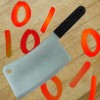
Originally Posted by
Byte_Butcher
I don't see the "Timer 1 Gate Event Interrupt" listed in the Available Interrupt Sources on your website Darrel.
Yeah, it's not in there.
But it's not too hard to add it to the DT_INTS-14.bas file....
Code:
ASM
#define TMR1GATE_INT PIR1,TMR1GIF ;-- Timer1 Gate Interrupt
#define INT_INT INTCON,INTF ;-- INT External Interrupt
#define RBC_INT INTCON,RBIF ;-- RB Port Change Interrupt
#define TMR0_INT INTCON,T0IF ;-- TMR0 Overflow Interrupt 16F
#define TMR1_INT PIR1,TMR1IF ;-- TMR1 Overflow Interrupt
...
and
Code:
GetIntInfo macro IflagReg, IflagBit
Found = NO
; nolist
ifdef TMR1GIF ;----{ TMR1 Gate Interrupt }---------------[PIR1, TMR1GIF]---
INT_Source PIR1, TMR1GIF, PIE1, TMR1GIE
endif
ifdef INTF ;----{ INT External Interrupt }----------------[INTCON, INTF]---
INT_Source INTCON, INTF, INTCON, INTE
endif
ifdef RBIF ;----{ RB Port Change Interrupt }--------------[INTCON, RBIF]---
...
<hr>
Then in your program's interrupt definition ...
Code:
'-----Set up Interrrupts
ASM
INT_LIST macro ; IntSource, Label, Type, ResetFlag?
INT_Handler TMR1GATE_INT, _CheckCount, PBP, yes
endm
INT_CREATE ; Creates the interrupt processor
ENDASM
@ INT_ENABLE TMR1GATE_INT ; enable Timer1 Gate interrupts
Good Luck!

















Bookmarks